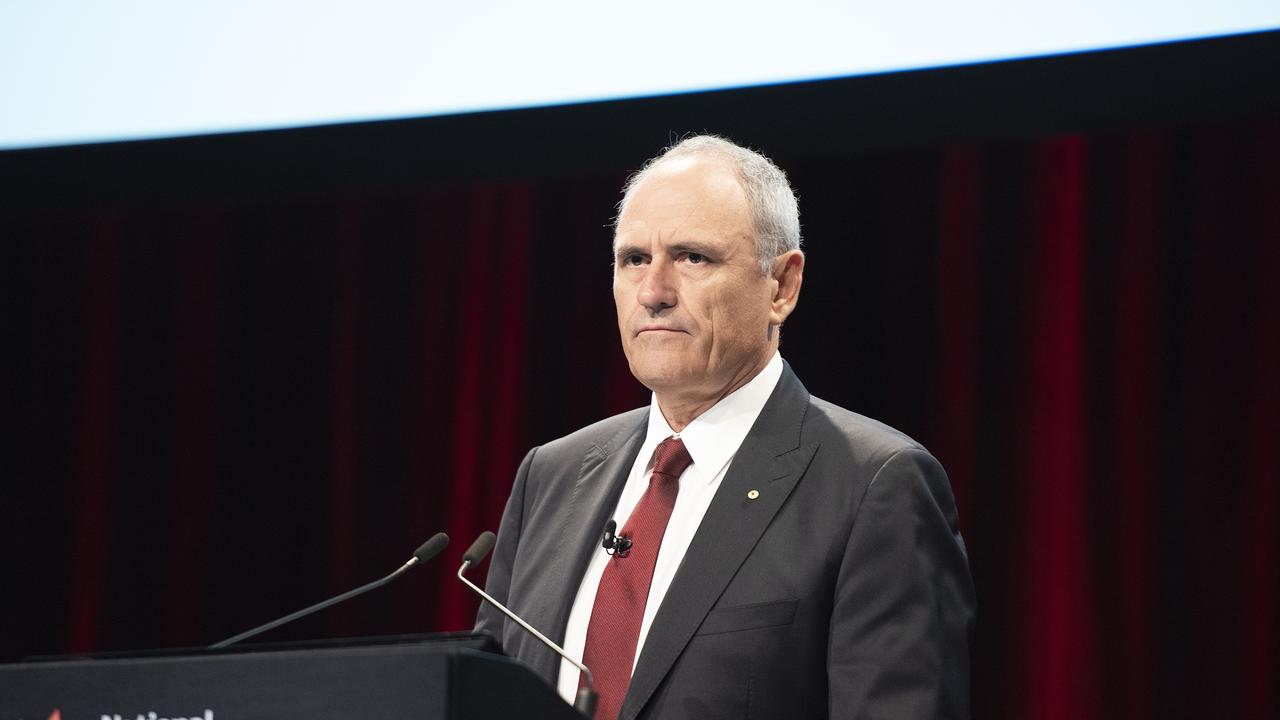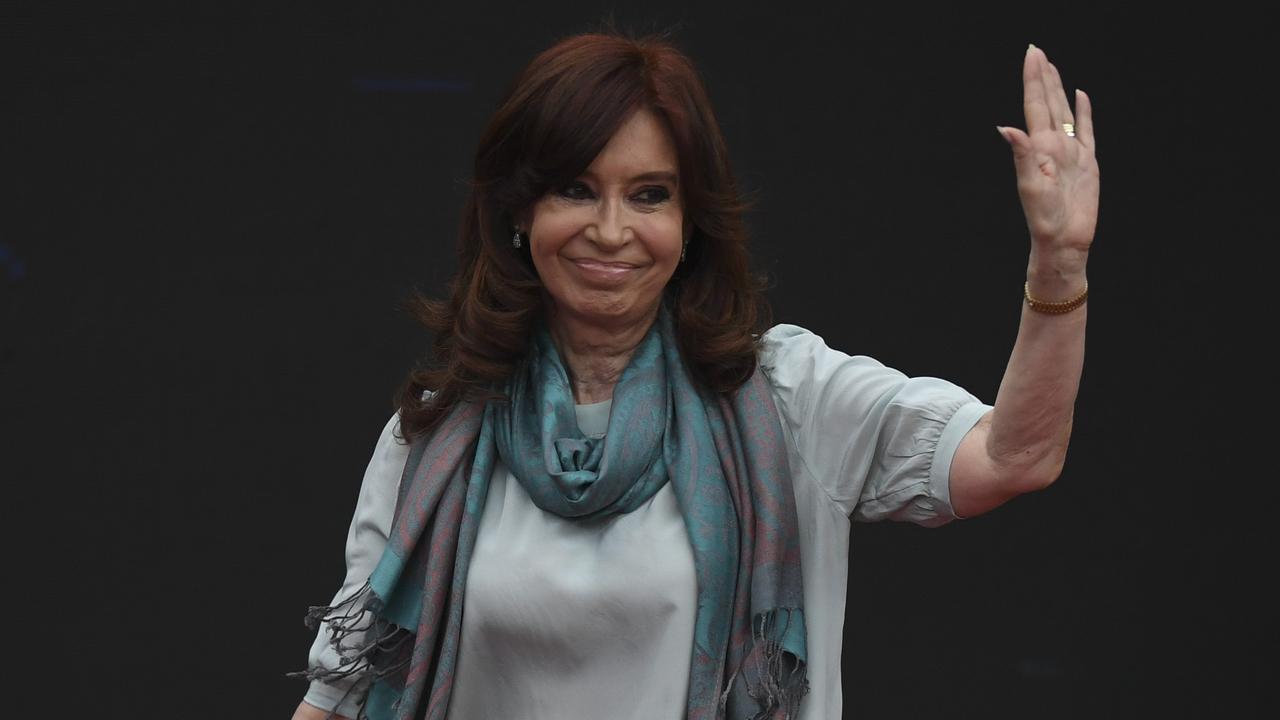Military moves in Pacific and Ukraine to show ‘Russia is back’
RUSSIAN warships north of Australia and a new military build-up in Ukraine are a “less than subtle” message from Vladimir Putin.
RUSSIAN warships in the waters to Australia’s north and a new military build-up in the Ukraine region are a push by Vladimir Putin to show that “Russia is back”, according to former army chief Peter Leahy.
On the eve of the G20 leaders’ summit in Brisbane, which Mr Putin will attend, Russia is making its military presence felt in the Pacific and Europe.
Russian troops, tanks, artillery and air defence systems have entered east Ukraine, NATO’s military commander said, stoking fears of a return to all-out war in the region.
Mr Putin had made a clear decision to risk the peace of Europe by flouting international security principles, said General Philip Breedlove, Supreme Allied Commander Europe. Kiev said that its forces were preparing “for combat operations” to resume.
Foreign Minister Julie Bishop meanwhile attempted to soothe anxiety about the “not unexpected” convoy of four Russian warships that has arrived in international waters to Australia’s north. Bill Shorten labelled the naval movements “a stunt”.
The arrival of the ships comes after weeks of tension between Mr Putin and Tony Abbott, including the Prime Minister’s vow to “shirt-front” the Russian leader over the shooting down of flight MH17, which killed 38 Australians.
INTERACTIVE: The G20 explained
The Russian fleet’s arrival followed reported moves in recent weeks to send bombers towards NATO airspace in Europe, towards the US and over Japanese territorial waters, and a search by Sweden for a suspected Russian submarine in its waters.
The director of the National Security Institute at the University of Canberra and former Australian chief of army, Mr Leahy said the warships were “a demonstration of power, but I’d say it’s a less than subtle demonstration of power”.
“I think Russia is sending us a message. And as I’ve said, it’s less than subtle, but it’s saying it’s a maritime power, it’s got global reach, it’s got interests in this part of the world,” he told the ABC’s AM program today.
“But frankly I’d be more concerned about what’s happening over in the Ukraine.”
Ms Bishop said Australian authorities were tracking the Russian ships, likening them to Australian ships deployed in Asia, or the US Navy’s presence in the Pacific.
“Russia is entitled, as any other country is entitled, to traverse international waters,” Ms Bishop said in Sydney today.
“Australia is a significant country with a significant navy and we’re required to undertake exercises from time and time and, as long as it’s done in international waters, then Russia is doing what other countries around the globe that have navies do. So it’s not unexpected.”
On the Ukraine movements, General Breedlove said in Sofia: “We have seen columns of Russian equipment, primarily Russian tanks, Russian artillery, Russian air defence systems and Russian combat troops entering into Ukraine. There is no question any more about Russia’s direct military involvement in Ukraine.”
The military build-up represented “a clear decision by Moscow to reject the international principles that have shaped international security for over 25 years, the foundation for a Europe that is a whole, free and at peace”, he added.
The claims were swiftly dismissed as “unfounded” by Russia’s defence ministry.
The Kremlin denies that it is involved in the fighting that has rocked eastern Ukraine since early April. However, Russia openly gives political backing to the separatist east, and it is unclear how else the rebels could have acquired their heavy weaponry.
Mr Leahy said: “I think it is really a less than subtle demonstration that Russia is back.
“Some commentators are saying, I think quite correctly, that Russia’s angry. They’ve been down for a while, they’ve got a lot of pressure and they’re reacting to that pressure from NATO up against their borders in the area of Europe. But they’re also saying to us, righto, we’ve got interests in the Pacific. We can pursue them.”
Mr Leahy said Russia had sent warships to hover near international meetings before, off Singapore for an APEC meeting in 2009 and off San Francisco during a meeting in 2010.
“I rather think it’s likely to be pre-planned and it’s more associated with the APEC meeting in Brisbane rather than the comments from the Prime Minister (over MH17).”
Opposition Leader Mr Shorten said: “I think that this is a stunt. I don’t think we should play the Putin game of engaging in his stunts. Ships sail around in international waters all the time.
“As far as I’m concerned this is a distraction from families getting closure by finding out why was that plane shot down, who knows what and who was involved with this terrible atrocity.”
The joint investigation team analysing the MH17 disaster — mostly comprising the Netherlands, Ukraine, Australia, Malaysia and Belgium — has agreed to extend the investigation for a further nine months to August 2015.
The Australian Federal Police has about 35 people working in Ukraine and The Hague as part of the investigation, Justice Minister Michael Keenan said, although the political situation is too “unstable” to return to the MH17 crash site.
Additional reporting: Jared Owens, The Times, AFP



To join the conversation, please log in. Don't have an account? Register
Join the conversation, you are commenting as Logout